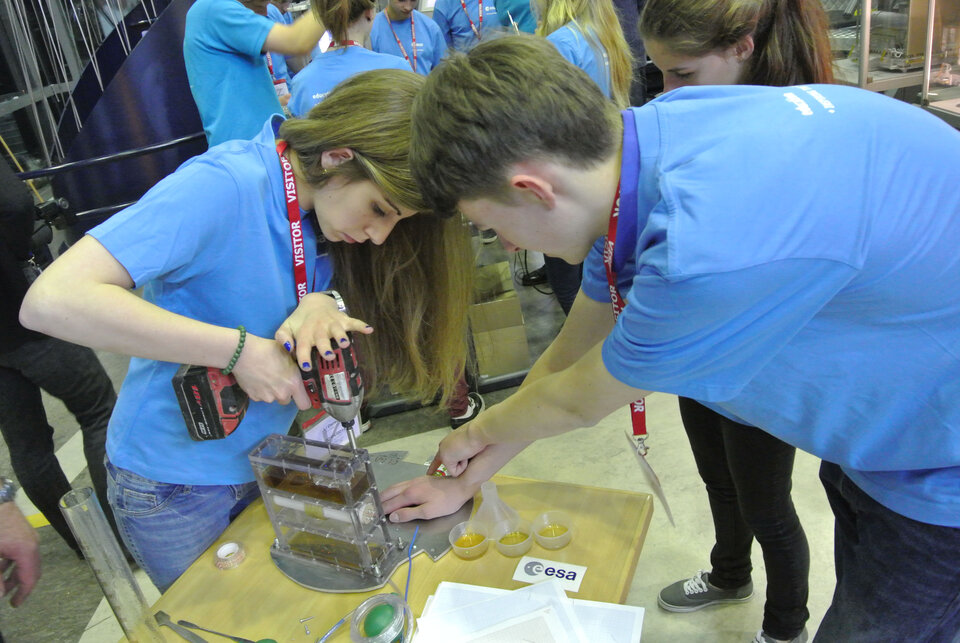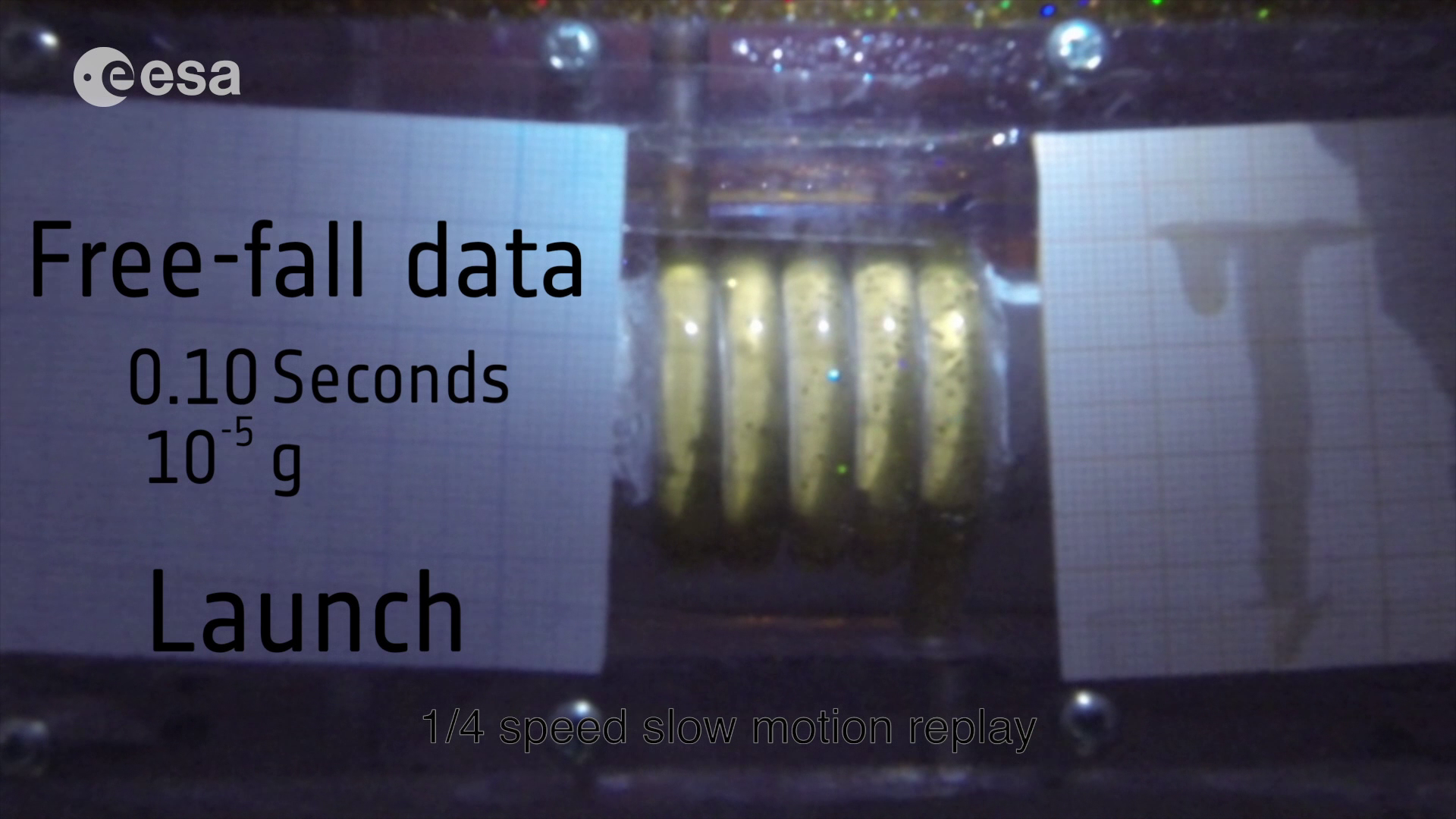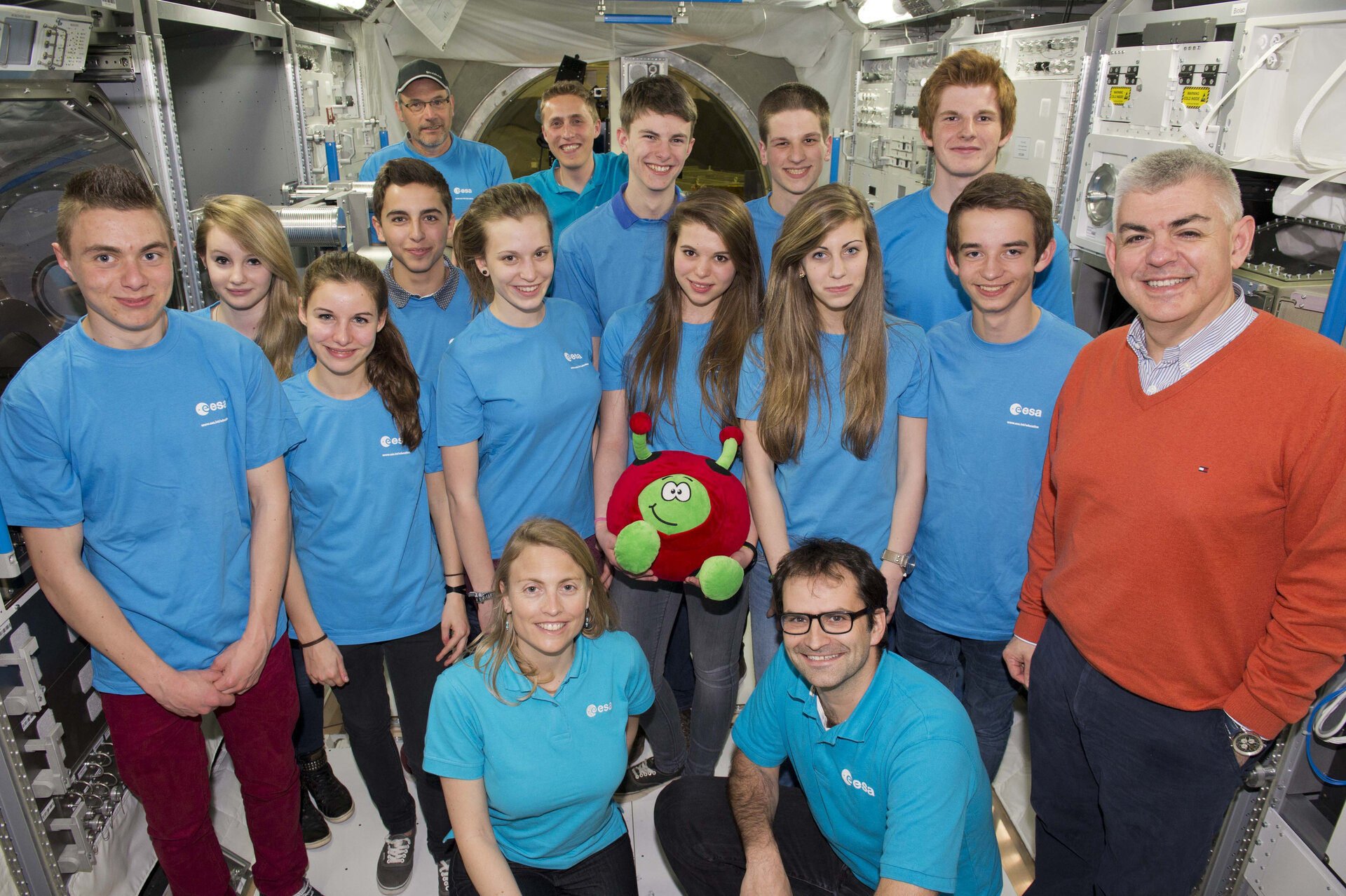Belgian Teenagers run Microgravity Experiment at ESTEC
Eleven Belgian teenagers recently made a special visit to ESA’s European space research and technology centre, ESTEC, in The Netherlands. Their visit was to use a unique facility that simulates the microgravity conditions of outer space.
Gravity lies behind many of the day-to-day phenomena that we take for granted. To understand its role in the way that fluids flow on Earth, the teenagers from Collège d'Alzon in Bure (Belgium) developed an experiment called OLGA for Oil Low Gravity Alzon.
As a school project, the teenagers fashioned a homemade hourglass that they then filled with oil and glitter. The glitter then allowed them see the movement of the oil. As expected, in normal conditions here on Earth, the fluid ran through the hourglass. But what if the experiment was taken into space?
Experiments are dropped from the top and caught safely at the bottom. During the fall, which takes about 1.5 seconds, the experiments experience microgravity conditions, more commonly referred to as weightlessness. During the capture, the experiment slows down so quickly that it briefly experiences 25 times the pull of Earth’s gravity. This must be taken into account in the design of the experiment.
The teenagers also rigged their experiment with a Go Pro camera to film the oil during its drop. This way they could collect results and verify that during the fall the oil stops flowing through the hourglass.

Before running their experiment, the students visited the Erasmus centre’s exhibition area. Here they could familiarise themselves with various experimental facilities including the Columbus module of the International Space Station (ISS). They also were treated to a virtual 3D tour of the ISS and the ESTEC test facilities. Then it was time to work. They made a presentation to ESA officials about their experiment and then started the ‘launches’, as the drops are called.
To simulate the microgravity found in space, ESA’s Education Office invited the students to use the ESTEC Drop Tower. The tower is housed in the Erasmus building and stretches over the full height of the three-storey building, providing a thirteen metre vertical drop.
Their experiment was loaded into a free floating capsule inside an outer shell. During the hoist to the top of the tower, the outer shell is lifted by the inner capsule. Once the payload is released, the shell and the capsule are no longer connected. The outer shell reduces the effects of drag on the capsule that would be caused by the surrounding air. This allows better microgravity conditions to prevail in the experiment.
In all, the team of 15-16-year-olds were able to run the experiment seven times. The Go-Pro camera provided plenty of images for them to analyse. An initial examination of the results on the day established that they could see that the fluid stopped flowing during the drop.
ESA’s Education Office is dedicated to help engage students of all ages in the work of the space sector. One teenager said, “This experiment was very constructive. It gave me the motivation to continue studying sciences.”

The wealth of experience can be glimpsed in other remarks made by the students. They included: Learned to work in a team and to prepare a project in advance and that we can make it; Learned to deal with stress; See sciences from a different angle; Learned to exchange between us and with professionals; Learned to work in real conditions; Learned to listen to the others, to be attentive; Learned to give your own opinion, share your ideas; Nice to see that professionals are interested in our project willing to help you and spend time on our project; To organise all together to do this project; Take some responsibilities, work hard; Learned to make a protocol, to design an experiment.
At the conclusion of the day, the students were asked to sum up the day in a single word. These included innovative, constructive, successful, enriching, motivating, interesting, unique, exceptional, and perhaps the biggest compliment of all: cool.
The ESTEC Drop Tower was inaugurated on 4 November 2004, and it is a ‘demonstrator’ intended to promote the use of the full-sized drop tower facility at the Center of Applied Space Technology and Microgravity ZARM in Bremen, Germany. ZARM has been an external ESA facility since September 2003.
At 146 metres tall, the drop tower can provide up to 9.3 seconds of weightlessness, and it is used mainly by professional researchers. ESA’s Drop Your Thesis! programme also allows university students to perform their experiment at ZARM.
For more information, please contact:
Natacha Callens
ESA Educational Programmes Coordinator
Email: education @ esa.int


Access the video




